This book came to mind when I read Michael Booth’s ‘The Almost Nearly Perfect People’ (2014) survey of Northern Europe. Booth mentions Brown’s book, too, in a rather left-handed way. Relying on my cataloguing system, I found this book on the shelf at the Ack-Comedy and had a look.
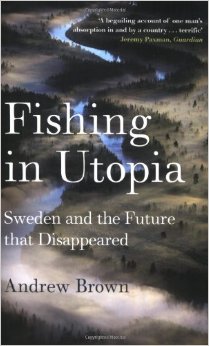
As when I read it first in 2009, I find it to be an understated book that neither condemns nor praises Sweden, the Swedish way, the Swedish model, and, accordingly, it does not satisfy the ideologues. It is low key in every way. It is more a personal memoir than an assessment of Sweden.
Brown lived in Sweden as a boy with diplomat parents, and later as a married man, and worked for a living in a sawmill. His experience of Sweden is far different from a travel writer who passes through for a few weeks of interviews in hotels and restaurants, and guided tours of the country side. His voice is muted and his comments are largely derived from direct, personal experience. Little is black or white, little is so clearcut to satisfy an ideologue. More importantly, his perspective is working class and from the hinterland, not urban middle class.
To judge from krimis Sweden is worse than Midsomer, every street, every town is replete with pedophiles, Neo-Nazis, Sven the Rippers, people smugglers, drug barons that put Latin Americans to shame, bankers who gave the Lehman Brothers lessons, and corporate villains to dwarf Enron, and worse. Anyone with a new car, a bank account in the black, a country cottage, a fine coat, got it by foul means. This compound of envy of the rich and imputation of evil to others is to be found in some other Nordic krimis, too, e.g., the Dane Jussi Adler-Olsen becomes poetic in his lyrical hatred of those he regards as rich. There is no depravity of which they are incapable. I fully expected to find his villains eating their own children, so I stopped reading his diatribes in malice.
But to return to Sweden, of course the pathfinders in this social criticism were Maj Sjöwall and Per Wahlöö. By the tenth volume in their Martin Beck series, the villains were cannibals. The first books in the series were police procedurals but along the way the authors ascended a soapbox and every page contained some sort of denunciation, not just of the evil rich, but the Swedish society that bore them. They attacked not just the filthy rich but the Social Democratic scrum who ran the place strictly for the benefit of the rich.
Talk about parochial! The authors lived in a decent society that had gone from subsistence farming to industrial surplus in the three generations, and they hated it for what it was not, namely, a communist Eden. It is rather like those self-righteous leftists in the 1960s who denounced Western liberalism as evil incarnate, while lining up to shake hands with Pol Pot. They do not know evil, that is for sure. Wake up! Look around. Try a few weeks in the third world. These very same types would spent hours defending Robert Mugabe, Muammar Gaddafi, or Fidel Castro, while condemning parliamentary democracy as a sham.
In contrast, Brown offers an everyday account of life and work. struggling to learn Swedish on the job in the mill. He finds much different from the England he left. As he notes many times, in Sweden there was a palpable sense of unity among the people he worked with which was aimed at getting things done. Ergo, the work in the factory was hard and everyone went at it with determination, including the owner. He contrasted this with his experience of working in a factory in England where the union made sure productivity was just enough to keep the wheels turning and no more. In Sweden everyone, including the union, wanted to get as much done as possible, whereas in England everyone, led by the union, want to do the least.
The unforgiving climate, the brutal history of the region with Germany on one side and Russia the other, and the recent past of grinding rural poverty combined, he speculated, to teach Swedes that the world does not owe them a living. They will have to earn it day by day. Brown met variations on this attitude in different guises, including church attendance. He found that religion, not necessary denoted by church attendance, seemed important to Swedes in the countryside where he lived. It was a sign of the larger whole beyond the individual.
That sense of a larger whole was comforting at times but stifling at others when he encountered a herd mentality such that no one dared to be different. Individual self-expression was actively disvalued in this milieu.
He is an outsider and is constantly aware of that and as constantly reminded of it by others. Swedes do not worry about what it means to be Swedish because they know it in their blood. They do not talk about it, they just live it. Brown wonders how this silent unity will wear with increasing immigration, made necessary by declining birthrates. The expectation to conform in Sweden is much greater than in England but there are almost no explicit clues about how to do it; he depended on his wife to cue his behaviour, say when checking out books at the library, cashing a cheque at a bank, buying groceries, all those everyday transactions that we do on automatic pilot he re-learned to do the Swedish way. For details read the book. He did learn to speak Swedish, by the way.
For the literal minded, yes there is quite a lot about fishing the book. It is Brown’s hobby and some of the most lyrical passages in the book are his weekends tramping through forests to lakes, amid man-eating mosquitos, to find a place to fish at sunrise, observing the breeze in the trees, the light on the water, the insects in the air. His father taught him to fish and he teaches his son.
The Sweden that Brown describes is all rather normal. Some people grizzle about taxes while cashing their pension cheques, denounce overpaid sportsmen while cheering them on. It is neither the paradise of its many rhapsodic admirers elsewhere, nor the putrid cesspit of depravity portrayed all too seriously by some krimi writers. It is no Midsomer!
 Andrew Brown
Andrew Brown
He returned to Sweden as a journalist and covered some of the aftermath of the murder of Olof Palmé in February 1986. There is superb thriller that springs from that event, ‘The Death of Pilgrim’ (2013). Of course, the conspiracy at the heart of the plot is simpleminded, but the performances and tension are very well done without the gratuituous gore and violence of some Nordic thrillers on screen, like ‘The Bridge.’ However, I found the time shifts back and forth threw me more than once, the clothing and hair styles were not enough to indicate to me the context. Brown, to his credit, does not compare Palmé’s murder to that of Jack, but the aftermaths are certainly similar, the desire for meaning, and the desperate desire for there to have been a conspiracy to give the act meaning.
Author: Michael W Jackson
‘An Honorable Defeat: The Last Days of the Confederate Government’ (2001) by William C. Davis.
The last days of a regime.
Regimes come and go. In most places in the world the change is rocky, ragged, and rugged: Mubarak in Egypt, Allende in Chile, Hitler in Germany, Amin in Uganda, Franco in Spain, or Peron in Argentina. Mobs in the streets, armed police off the leash, fires breaking out here and there, hastily packed bags, the Swiss account numbers memorised. It is even more difficult when there is a war on with marauding raids, artillery shells in the air, and masses of troops on the move.
That is the subject of this book, the transition of the government of the Confederate States of America out of existence from February 1865. The hour finds the man, Italians sometimes say, and this hour found John C. Breckinridge who is the major character in this telling.
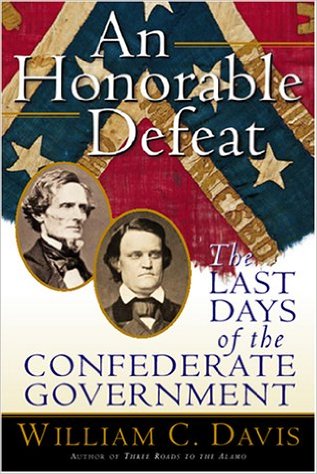
An honourable defeat, as in the title, would mean the best possible negotiated terms for the men of the Confederate Army and Navy, e.g., that they would be allowed to go home and not be imprisoned or otherwise punished and also that civil order would continue even when the war ended, i.e., that the state governments would continue to maintain law and order, protect banks and private property, dams, bridges, roads and so on. None of this could be assumed, it had to be brought about…somehow. It also meant that the army would not disintegrate into bands of armed men preying on the civilian population.
An honourable defeat also meant that none of the tens of thousands of armed men pledged to the Confederacy would be encouraged by word, deed, or silence to resort to partisan or guerrilla warfare. That is. when the government capitulated, all its loyalists would lay down their arms. There would be no further resistance.
In return for that guarantee there would be no reprisals against individuals. Breckinridge also wanted the units of the army to remain together and march home, i.e., the Fifth Mississippi infantry regiment would march back to Mississippi en bloc and put themselves under the authority of the state government as a militia to keep order, if that were necessary, and the looting and banditry that occurred in Richmond and environs so quickly after Lee’s withdrawal made this a real possibility. Indeed if the units simply broke up individually, the fear was that some would turn to banditry, think of the James brothers. Even those who called themselves partisans would be a greater threat to Confederate civilians than to the Union army, e.g., the James brothers when they rode with William Quantrell.
To bring about an honourable peace was difficult, first, because the elected president of the constitutional government of the Confederate States, Jefferson Davis, did not accept defeat was inevitable. Second feelings ran high after years of death and destruction, would anyone listen. Third, getting any message out was nearly impossible given the destruction of railroad and telegraph lines.
A major part of this story is the intransigence of President Davis for whom every reverse meant only that others had to redouble their efforts and make more sacrifices. Under the blows of defeat, he increasing retreated into a silent shell, but when he did speak it was the same message of more effort, more sacrifice. Even when resistance would serve no purpose he would not accept the personal humiliation of defeat, at the cost of the lives of many others.
During most of the flight of the Confederate government from 2 April to the end of May, Davis was lost in a cloud of despair and denial, leaving Breckinridge to exercise the executive powers remaining to the government. These powers were few but they were not negligible for those affected by them. Chief of these was to maintain social order, but also extended the preservation of and then the orderly disposition of government property. He was de facto acting President.
President Abraham Lincoln had refused to recognise the Confederate Government and he would never treat with it in any way. Yet Lincoln’s murder changed everything, for the worse, and meant that the Federal government was even less likely to respond to any overture from the Confederacy.
That the result was as peaceful, harmonious, and orderly as it was, the author credits largely to the efforts of John C. Breckinridge (1821-1875). He was a moderate from Kentucky with a distinguished political and military career. After a term in the United States Senate he was Vice-President in the administration James Buchanan (1857-1861). He was a candidate in the 1860 presidential election, one of four, and he won most of the Southern states, and so had a national reputation. After the election, won by Abraham Lincoln with far less than a majority of votes, Breckinridge returned briefly to the United States Senate.
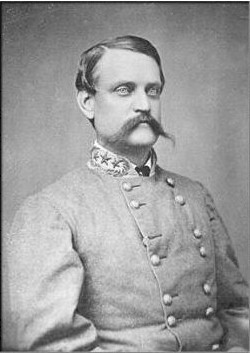 John C. Breckenridge
John C. Breckenridge
He had served in the Mexican-American War of 1846-1847, as did so many other Civil War soldiers did. When the Civil War loomed he was commissioned a brigadier general to raise Confederate troops in Kentucky where his family name was widely respected. During the war he rose in rank to major-general of the CSA and served at Shiloh, Stone River, Missionary Ridge, and New Market. Like everyone who had to misfortune to serve with Braxton Bragg, he was sidelined because Bragg, being one of the few with any influence over Jefferson Davis, convinced Davis that Breckinridge was disloyal. Go figure, after reading that list of battles.
Despite being in sole command at one of the few battles Confederate arms won in 1864 at New Market, he was relieved of command. Then in a desperation move, Davis appointed him Secretary of War. It was desperation because no one else wanted or would take the job, and Davis perhaps thought he knew and could control Breckinridge with threats of censure on the the trumped-up charges Bragg had lodged. In this case as in all others, Davis was no judge of men (and perhaps not of women either). Breckinridge took the assignment exactly because he knew the end of days was coming, and he hoped to see an honourable peace as outlined above, and would work hard and intelligently to achieve it.
While the Confederate government remained in Richmond in February 1865 Breckinridge schemed, planned, plotted, and conspired with likeminded others to pressure Davis to face facts and seek peace. It is both heartening and depressing to see that their efforts were constrained by respect for constitutional provisions setting forth presidential powers, upholding states’ right, making supreme the civilian control of the army, and so on. Breckinridge himself was so rule-bound and though he found others who agreed with him about the need to seek peace now, they were also rule-bound. Still others were unwilling to take a position because they still hoped for some benefit from the situation. Even in March 1865 there were some Confederate Senators who aspired to succeed or replace Davis. The ego drove some to hope to be themselves President of the Confederate States of America even as it dissolved. (Pedants note, Confederate presidential elections were scheduled for 1867.)
But Breckinridge never had in mind a coup d’état which would only create more dissension, animosity, and confusion. He and all he involved adhered to the letter of the Confederate Constitution. While the most prestigious figure in the Confederacy General Robert E. Lee agreed with Breckinridge, this demigod would not overstep the chain of command. He reported to Davis and took his orders from Davis and he would not depart one iota from that, though at the same time he would lay out the unvarnished truth of the situation to Davis in his reports. These Davis would hear in silence and as always thereafter speak of redoubled efforts. Breckinridge spent several twenty-four hour days trying to coax and coach Lee into submitting a written report that implied, if did not say, surrender. Lee would never go quite that far. The conclusions to be drawn from his reports were the responsibility of his political masters.
Breckinridge tried at the same time to put together a coalition Senators and Representatives to arouse the Congress to ask the President to report to it and during the subsequent debate the peace initiative could be raised. He could not quite gain the support of the right individuals or in sufficient number.
He also tried winning over this half-a-dozen cabinet colleagues to speak as one to the President to seek peace. Some were so jaded by then as to be indifferent. Others kept alive their own ambitions, if not to succeed Davis, then to return to a political career in a state. One was a complete David sycophant. To win one man over was to alienate that man’s rivals.
He also tried to find a way for the State Government of Virginia to recall its citizens from service in the Confederate States of America armed forces, thus emasculating them in the East, and then for Virginia to secede from the Confederacy on the assumption that other states would have to follow that example and so bring an end to the fighting. The Confederate Constitution recognised state sovereignty.
To sum up, Breckinridge tried six or more different approaches, singly and in combination, to create a coalition for an an honourable peace in the Confederacy. He tried cabinet. He tried the Senate. He tried the House. He tried the state of Virginia and later North Carolina. He tried the leverage of General Lee’s prestige. He tried, later, General Joseph Johnston’s last remaining army as leverage. He tried some of these avenues more than once and several in combination.
He tried to influence Lee to sign his order of surrender on 9 April 1865 as Commander-in-Chief of the Confederate forces, a hollow title Davis had bestowed on him in earlier. Breckinridge thought that nomenclature would justify the end of hostilities across the board. Instead Lee directed his order to surrender to his field command, the Army of Northern Virginia in his General Order Number Nine. He felt he had no larger authority to dictate to others in Mississippi, North Carolina, or Texas.
That might have been enough to keep a normal man busy, but while Breckinridge was doing all of this, and more, he was also managing the largest, most complex, and important department of the Government of the Confederate States of America, accomplishing feats of provisioning, storage, and distribution that had baffled his predecessors. Lee commented on the irony that his army had never been so will stocked with food, uniforms, and munitions as it was in the last few days of its service. That fact he attributed to the labours of Secretary Breckinridge.
To no avail, and on 2 April, General Lee withdrew the scarecrows of his army from the earthworks at Petersburg and fled south and east to avoid the closing jaws of the Union army. The government now had to evacuate Richmond which was open to Federal assault. Breckinridge had no general authority, but as Davis was nearly comatose with shock, he took it upon himself to organise the selection of archive material for destruction or shipment, the opening of warehouses to distribute the food and clothing that remained, before the Federals arrived and took them, the burning of bridges, the assembly of wagon trains to put the government into flight, and to piece together the railway trains to transport the cabinet and the treasure (perhaps $500,000). He also managed to raise a scratch force of horsemen of several thousand to escort the wagon trains.
By default Breckinridge became the de facto manager of the government’s flight and gradual decay. All the while he continued to search for a way to produce an honourable peace.
Nothing was easy and nothing worked smoothly. When they came at all, the trains were five or six hours late. Roads were impassible in the mud of early spring rains and horses were near starvation to begin with. People got lost in the confusion. Mobs choked streets in fear of the coming Federals. Looters got to work. In the confusion arsenals in Richmond were destroyed, setting fire to much of the city. There were fears and rumours of an armed slave uprising fomented by the Federal cavalry.
Apocalyptic it was.
There was no plan except to get the government out of Richmond. Breckinridge hoped it still might bring an honourable peace, though the capacity to do so diminished with Lee’s surrender, while Davis spoke of, take a guess, redoubled efforts. The merry-go-round stopped briefly at Danville Virginia. The cabinet set up shop in front parlour of a private home. Davis wrote a message to the people calling for…redoubled efforts. Breckinridge gathered intelligence about the armies and tried to find a way to make peace through the state of Virginia or then North Carolina.
Federal cavalry was out in force looking for this government on wheels, and Danville was so obvious a place that burned bridges or no, it had to move on, to Greensboro in North Carolina and on and on further south.
There was no master plan and it was only Breckinridge’s initiatives that kept the wagons rolling. The group started with thousands of men, soldiers and civilian officials, and their cargo and camp followers, and other citizens terrified of rumours of the Federal atrocities (attributed to black troops, who truth to tell were themselves victims of atrocities).
The purpose of the flight changed as time went on from (1) negotiation, (2) maintenance of social order, (3) personal safety and exiles of Confederate Government officials, and (4) to assist Confederate soldiers who had surrendered to get home, (5) to settle the outstanding debts of the Confederate government with that dosh. The disintegration of Confederate armies rendered negotiation moot. Social order did break down. As soon as the caravan left a town, the government stores, offices, and warehouses as other public facilities were ransacked, looted, and pillaged. As word spread of the comprehensive defeat, other civilians took to the hills, partly to escape the feared Federal atrocities and also to escape the likes of Quantrell.
There was never any intention to take the government into exile, though some of its individual members might go into exile to avoid Federal retribution, especially for the murder of Lincoln, which many in the North thought was a Confederate deed.
Breckinridge tried, on the retreat, to preserve War Department records. Those left in Richmond were put into fire proof safes, not all of which proved to be fireproof. As they shed wagons, railway cars, and load, more and more paperwork was left behind. Much of this he tried to leave in the safes of local banks, and in other cases put into chests and buried. In part he wanted the historical record to show what had happened. This accuracy of record became even more important with the murder of Lincoln. He wanted to demonstrate that the were was no involvement of the Confederate War Department.
He also held onto some of the paperwork long into the journey to the annoyance of some in the group because it slowed the pace. Among the papers he kept at hand were dossiers, documents, charge sheets, affidavits, testimony that identified Confederate officers who had committed atrocities, usually on black Union soldiers. While en route he tried to locate one such officer who had killed helpless black Federal prisoners. This had occurred in an area where Breckinridge had nominal command on paper, though he had become Secretary of War and had left the department, his name was still on the letterhead. That made it personal since these murders had occurred in his name.
Breckenridge authorised the dispersement of the treasure along the way to pay off soldiers in the escort, to buy provisions, shoes, and clothes for paroled soldiers trying to get home, and to buy medicine to treat wounded men. He himself took the soldier’s pay of $26.60 out of the hundreds and thousands he had in hand. This was the amount all soldiers. regardless or rank were paid, Several of his cabinet colleagues were much more grasping according to the assiduous financial records kept even on this trail of tears.
The trip goes on and on, as the group splits, and takes different routes. At the end of May after some weeks in the swamps of south Florida, Breckenridge made it to Cuba, His last act as an official was to appeal through the resident American journalists in Havana for all Confederates to lay down their arms and accept the result. After some years in exile he returned to Kentucky and lived quietly, refusing an invitation from President U.S. Grant to re-enter politics. His health had been badly damaged by war wounds and then the diseases and hardships of the flight through Florida.
Early in the odyssey he become the first and only Secretary of War to lead troops into battle when he led the cavalry escort in a counter attack on Federal pony soldiers who threatened the column (p 99). Would contemporary Secretaries of Defense be less likely to put boots on the ground in combat if the boots were theirs? Or their children’s? The answer is obvious: Yes.
Our author says Breckinridge, as a former Vice-President (1857-1861), was the most senior political figure to side with the Confederacy (p 167). Former President John Tyler (1841-1845) did so, too, serving as a Congressman from Virginia in the Confederate House of Representatives until his death.
A stylistic quibble, ’Secretary of War’ should surely be in capitals since it is a title, like a proper name but it is not.
I read this book near the publication date and when the upheaval of moving brought it to light again, I put it aside and dipped in, but once in I kept going since it is such a compelling and fast-moving story with a cast of characters from the ever-smiling in the face of adversity Secretary of State Judah Benjamin, the taciturn President Davis, the demigod Lee, the clever temporiser Joseph Johnston, the man of the hour Breckinridge, and many lesser known figures who rose to the occasion.
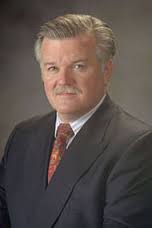 William Davis
William Davis
One such instance of rising to the occasion occurred when a month into the flight, Davis summoned the brigade commanders of the 2,500 escort troops to an audience. When they assembled, Davis spoke of redoubled efforts and still more sacrifices as they stood in dumbstruck silence. Davis expected them to salute in agreement. He did not assemble them for advice or debate but to agree with him and to obey.
As the silence prolonged, he finally asked them to respond. To his credit, the senior man of the five brigadiers, George Dibrell, stepped forward and said it was hopeless situation and useless to ask more of his men who had continued this long out of personal loyalty. In turn, the other four concurred. Davis paled, and as always when confronted with contradiction went into his shell. There was more silence. Finally, Davis’s manners returned and he dismissed them only later to bemoan their lack of resolve. All praise to General Dibrell for calling a halt to the madness.
‘Spear’ a film by the Bangarra Dance Company.
Our last Sydney Festival gig was this film. Through images and dance it conveys the ambiguity of being an aboriginal in contemporary Australia. Note it is not a narrative.

Unlike some of the annual breast beating about Aboriginal Australia that usually occurs on Australia Day and then is quickly filed away, this film is direct without either villains or victims, although there are some cringe-making moments.
A young man undergoes an initiation ritual. Into what? Is he affirming his aboriginal heritage or leaving it behind? Should he do one or the other? What is the past in Arnhem Land? What is the future in Redfern? There is some symbolism interspersed with some very literal and brutal honesty.
Some of the emotions are expressed through dance, somr through symbolic figures. and once and while in words. Mostly it is introspective with some aboriginal language, music, and bird calls. It is spare.
The boy witnesses much and is left to make his own choices, day-by-day.

There was much that I did not get, like the upside down man, but the movement, the intensity, the creativity, they were more than compensation. There is some film on You Tube for samples.
We have seen some of Bangarra’s other productions and found them compelling. Ditto this.
‘Double blind,’ modern dance, Sydney Festival 2016, at Carriage Works, Redfern
We loved the wit, creativity, energy, commitment, and choreography by Stephanie Lake. All in about an hour. Nicely done.
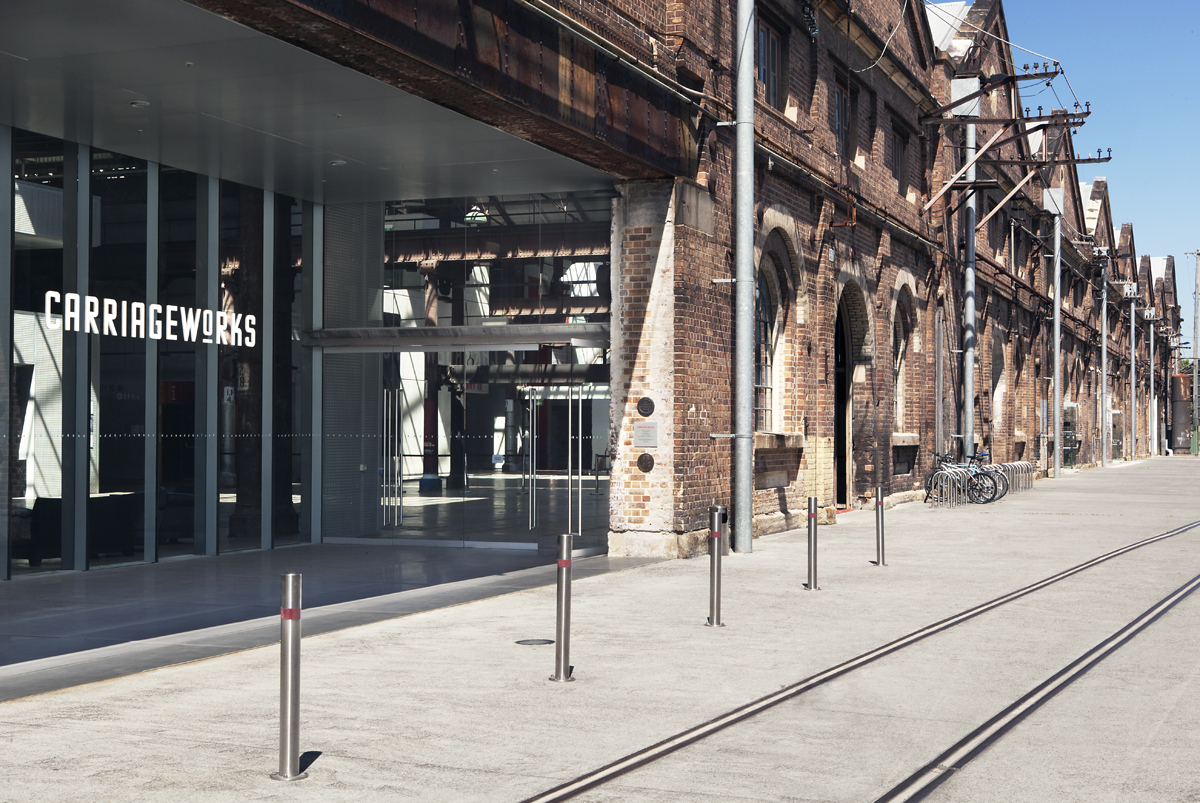
The sounds of buzzing electricity coveys human interactions and emotions in the reactions of the dancers.


It is divided into segments and it might have been nice to have them named in a program if for no other reason than to allow a viewer to reflect later on what has been seen.
Some of the early segments were intriguing and amusing: they seemed exploratory. The opening segment showed the energy between a young man and a young women, part playful and part serious. It drew in the audience, a full house it seemed in; l leaned forward, and I was not alone.
During one unpleasant segment in the middle, a voice-over said the word ‘experiment’ in a European accent. Moreover, the static sound in this part was taxing to the ears, like the screech many of us would fear in Room 101. (Get it?)
 Stephanie Lake
Stephanie Lake
The closing segment was a reminder of Dr Frankenstein testing the capacity of electricity to bring creatures to life and to bend them to his will.
The press notes say that the choreographer was inspired by the Stanley Milgram experiments of the 1960s, which have been so widely reviled as to enter into the popular culture where all things undergo an alchemical transformation to the simple and sensational.
Download file
Should I suspect that the inspiration was the film ‘The Experimenter’ (2015), which is, well, as they say, based on a true story, and inspired by Milgram’s original studies published in psychological journals culminating in the book ‘Obedience to Authority’ (1974)?
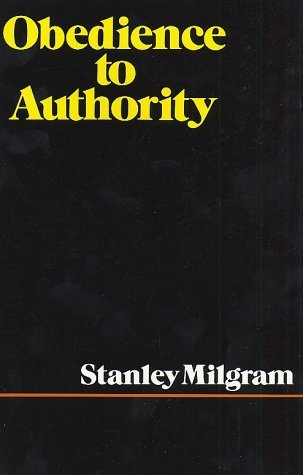
The apparatus to which the dancers were often tethered resembles the film prop. That much is clear.
The Yale University experiments both made Milgram’s reputation and destroyed it.
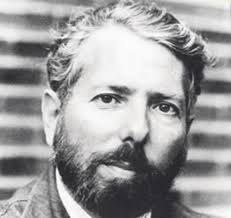 Stanley Milgram
Stanley Milgram
Made it, because he thought they showed the willingness of ordinary men (they all were men) to inflict suffering on other ordinary men at the behest of an authority figure, and so the results have entered the popular consciousness: We all have a little evil torturer within ourselves. In reaction, he became a celebrity social scientist on the talkshow circuit, rubber chicken speaking tour (on which I saw him in flesh), and head-hunted by universities to add glamour to their funding raising.
Destroyed it, because in the inevitable backlash (read envy) there was a competitive rush to find victims of Milgram himself and to feel sorry for them. A number of psychologists concluded that the ordinary men who participated in Milgram’s experiments had suffered anxiety and fear in ostensibly inflicting pain on others. He became a persona non grata and the Olympian American Psychological Association enacted research protocols to prohibit research that might stress subjects.
‘Blind’ and ‘double blind’ have specific meanings in research. In general ‘blind’ means that one person does not know the identity of the other. When the paper I submit to a journal is assessed by editorial readers I do not know their identity; I am blind to their identities. Sometimes they are permitted to know my name on the cover sheet of the submission. That is an example of ‘single blind,’ or ‘blind.’
When the cover sheet is removed and the manuscript is otherwise cleansed of any information that might reveal my identify then the editorial reader does not know my name. Voilà! This is ‘double blind.’
Human ingenuity can find ways to signal identity through this process and well informed editorial readers make their own inferences, but that is the form, which is practiced very generally these days, made easier by digital communication which widens the net at both ends, submissions from around the world which and sent to editorial readers around the world.
In experimental work like Milgram’s ‘blind’ means that the subject does not know that he (I am going to stick with men because they were Milgram’s subjects) does not realise he is the one being studied. These men were told that that the study was about how other persons reacted to them, in that sense they are part of the research team and not themselves subjects. Ha, ha, ha! They are thus ‘blind’ to the purpose. In this context ‘double blind’ would mean that the experimenter also does not know that the subject is the subject, i.e., whether a member of the control or treatment group, for those who know the terminology. This makes sense in some studies and it cancels any prejudice by the experimenter. A quick look at Milgram’s book does not yield a reference to ‘double blind.’
To return to the dance, perhaps ‘double blind’ means not knowing whether one is in charge or is a victim, is master or servant, is boss or employee. Perhaps those who think they are in charge are in fact being themselves manipulated by still others. That those who are running the machine are in fact being run by the machine. That is how Michel Foucault would put it.
Did Milgram prove what he said he had proven? That evil is within every ordinary persons who will blindly follow any authority. Really? Consider the context.
He did the bulk of those experiments while the streets in American cities like New Haven (Yale) and New York (NYU) where he did his studies were often choked with civil rights demonstrators opposing authorities equipped with pressure hoses, attack dogs, automatic weapons, tear gas… need I go on? When the civil rights protestors were recovering from the beatings they suffered at the hands of authorities, the streets were occupied with anti-war protestors opposing the war in Vietnam. Need I go on? In fact, both of these movements preceded his work and he took no notice of either.
Were his subjects everyman? They were those who answered the newspaper ads, and they were single men who wanted the fee for participation, small though it was. Hardly a cross-section of society. Milligram was not a sociologist so there was never any profiling of the subjects. I said ‘men’ above about the early advertisements called for ‘men’ and the wording of the reports in journal articles and in the book is always that. Nothing in the experiments went into differences among the demographic characteristics of the subjects by age, education, sex, occupation, and the like.
There is a very disturbing book about the evil within, and that is Christopher Browning’s ‘Ordinary Men’ (1992) which is a study of an German police battalion in Poland in 1940s implementing the Final Solution. Grim, indeed. But what emerges in the short book is that these were pretty ordinary men even in that terrible situation, and very few of them were zealous murders, but that some were and they were off the leash, while the others looked away. I learned more about evil from Browning’s book than Milgram’s and part of what I learned is that no generalisation works. I also learned that looking away is the reflex. It may be the best one can do.
Yes, I have published on this in ‘Orders and Obedience: Structure and Agency,’ International Journal of Sociology and Social Policy, 26 (2006)7-8, 309-325. Dial it up and be enlightened.
Milgram was a brilliant experimenter and his other studies have long been overshadowed by this series. He himself rather encouraged that, I suppose. But he did many others about crowds and queues all the while observing the Milgram rules made by the gods of the APA.
There is a novel that likewise claims inspiration from Milgram, namely Will Lavender, ‘Obedience’ (2009).
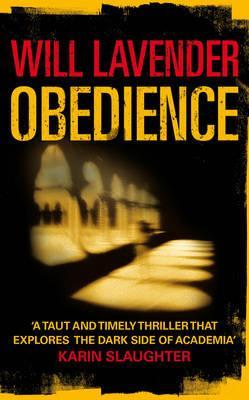
I liked reading it but the line to Milgram was tenuous.
Barbara Pym, ‘Less Than Angels’ (1955).
This is a novel about the lives and loves of a group of anthropologists at a London institute. For those who have to have a label perhaps we can call it a comedy of manners like Antony Powell’s ‘Dance to the Music of Time,’ the token that defined the type.

Tom, Deirdre, Digby, Catherine, Miss Clovis, Mark, Professor Mainwaring, Alaric, Rhoda, Professor Fairfax, Mrs Foresight, and others make a living sharply observing primitive peoples in Africa, while unconsciously acting out the same rituals in London. That makes it sound more didactic and pedantic than it is, but the cumulative effect is to observe the observer.
Only the visiting scholar, Frenchman Jean-Pierre, makes a point of observing and cataloguing English ways just as he would in the heart of Africa. Though he is unfailingly polite and far more considerate of others than any of his hosts, they regard him as odd.
The professional rivalries and jealousies all ring true but are played out with a polite formality. In all the author has a light hand.
The rituals of the off-print, when it still existed, are amusingly set forth. So that is what one was supposed to do with them, I said to myself! My collection of them grew to occupy a filing cabinet and I put them in a yellow recycling bin when I left the Merewether Building. I wonder what the ritual is now with PDF versions? No idea.
The centre of this little drama is Tom Mallow who is devastatingly attractive to women, which he takes for granted in a vague way as he ricochets from one to another, barely noticing the differences from Elaine whom he absent-mindedly jilted a few years before, Catherine who was mother and wife to him without the benefit of law, and Deirdre whose cow-eyed veneration warms him. Digby and Mark circle around in the hope of leftovers.
He is also the golden boy at the Institute, though he never seems to finish anything. That omission does not diminish his glow.
Alaric who has never published anything, though he treasures dozens of tea chests full of field notes, devotes his considerable energies to writing caustic reviews of the books others dare to publish. He never has a good word to say. Still less when book review editors sometimes alter his prose to make it less venomous. That elicits another war of words between Alaric and the offending editor.
All of this seems true to life, if from an earlier time.
One of the themes is the way we have of idealising and wanting the life that others have. The urban, educated, worldly Londoners pine for the suburban calm, snug family life of the provinces. The provincials lust after the allure of London and resent the claustrophobia of the Sunday lunch en famille. It sounds leaden when I write it but in the book it is a feather on wind, conspicuous yet ephemeral yet entertaining to watch.
Spoiler alert!
Tom, chronically vague and oblivious of his surroundings, absent-mindedly gets himself killed and Deirdre discovers that she recovers from the shock of the news of the death of this demigod in a few hours. Digby is so amusing. Catherine convinces Alaric to burn his field notes and so free himself of the burden they have silently imposed on him all these years. Professors Mainwaring and Fairfax begin another tug of war over a new golden boy. Miss Clovis shelves Tom’s thesis and goes to tea. Gone and forgotten in a very few minutes.
I first read it sometime in the latter 1980s or early 1990s and the volume came to light again in the course of moving to the new abode. At that earlier time I had meant to read more by Pym, but failed to do so. I will try to do better this time around and I have plunked another of her titles in my Amazon basket.
Pym wrote a number of such novels but then fell out of favour. She kept writing them but her publisher decided she was old fashioned and stopped taking them. Her efforts to find another publisher failed for the same reason: fashion, or the perception of fashion, from the editorial desk. Then in the later 1970s some literary lions (re)discovered her, and her books came back into print…to stay. I expect the editors who rejected her work were paid handsome bonuses for such insight, but their names are now forgotten.
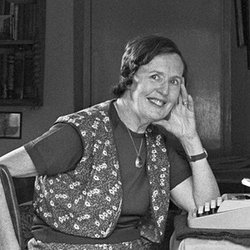 Barbara Pym at work.
Barbara Pym at work.
She, by the way, was crushed by the rejection. This all from Wikipedia.
‘Consider the Fork: A History of How We Cook and Eat’ (2012) by Bee Wilson
When I saw the title on this Christmas present from Herself, I thought of Norbert Elias’s ‘The History of Manners’ (1939). The book at hand is broader than its title indicates. The subtitle pretty well sums it up, however, I would have been tempted to call it ‘Consider the Kitchen,’ because that is the culmination of the book.
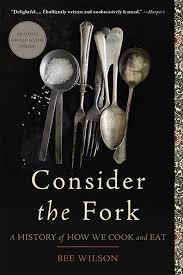
Each chapter focuses on some essential aspect of food and eating in one word titles: fire, ice, knife, fork, grind, and, finally, kitchen. The fork which I begin to consider is important, to be sure, but it is only one element among seven others, hence my quibble about the title.
Ever wondered why a kitchen knife is sharp only one side? A table fork has four tines? Why was the freezer on top of the refrigerator until recently? Why are tin cans of food the size they are? Why are refrigerators powered by electricity when they use gas? How did the can-opener evolve?
Probably not, we take everyday things for granted, but there is much to learn from the answers to such questions. Successful innovations started by pandering to the expectations of consumers as in the case of refrigerators. The influence of major industries also figures, as electricity powered refrigerators, a boon to power companies because refrigerators, unlike light bulbs, are always on.
Here are few tidbits. Japanese knives are sharpened to 20 degrees while most European knives are sharpened to 30-35 degrees. Why? The difference traces back to a combination of the use of the knife and the material it is made from. The carbon steel layers that combine in a Japanese knife take the sharper angle. Though it is dangerously, lethally sharp it is confined to the kitchen for preparation. European knives are made from a different compound of metals, and the use of the knife is not so strictly regulated by convention to keep it in the kitchen, e.g., Europeans cut meats and carve birds at the table in way unknown to Japanese cuisine.
Most interesting of all is, of course, the greatest technology of cooking, the kitchen itself. At one time food was prepared in a lean-to behind the house, now the kitchen is often, usually the centre of home-life. There is the amusing story of post-kitchen renovation depression, after years of saving for, planing, selecting appliances, designing a new kitchen, when it is finally done…there is nothing to occupy every waking hour. There is but a void.
Chopsticks are another world. The lacquered and pointed Japanese ones are impossible. The flat steel Korean one with small raised striations for gripping the food are the easiest to use. In between are the plain Chinese wooden ones, which are used in such a quantity to threaten the forests of the country.
The discussion of the potato parer is wonderful. We put up with that primitive implement for generations until someone whom she names came up with a better way. We do put up with a lot of inconvenient things because that is just the way they are, until someone comes along and betters them.
In the 1920s Marion Mahony at Castlecrag designed kitchens in the front of houses, looking into the street, to reduce the social isolation of the housewife eliciting the consternation of local councils, mortgaging banks, and some clients. Certain patterns are ingrained. This incident is not included in this book but it seemed relevant.
By the way, the fork is credited to Catherine di Medici when wed to King Henri of France and mother to his successor. She had a household of Italians to Paris and from there emerged the fork. Of course Italians had been using it for years but it only entered the food culture when it was used in France. Another example of ideology over reality. By the way, she is routinely blamed for the Saint Bartholomew’s Day Massacre of Protestants.

Bee Wilson wears a great deal of learning lightly, and passes much in review with no distractions. An attentive reader will notice that there are a few aspects of the contemporary food culture that she disdains but without ever quite saying so, a subtlety that will pass most by.
‘The Events’ – The Sydney Festival
We trained to Granville to see Scotsman David Greig’s drama ‘The Events’ at the town hall. It is a grim story of the aftermath of a mass murder, stimulated by that in Norway in 2011. In this case the victims, far fewer in number, are members of a community choir. It centres on the nightmares of a survivor, the choirmaster. Grim to be sure. Not our usual choice for a day out, but the chorine goes where there are choirs and I follow along.
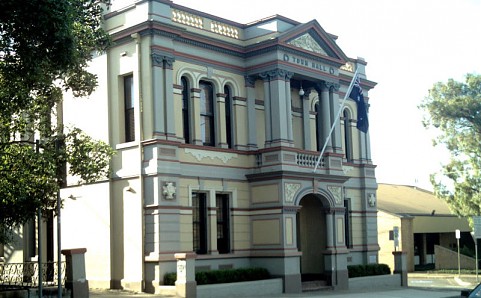
it is a two-person show with a choir. One is the lead, Catherine McClements who mainly plays the survivor, and John Carr who does a variety of others. It is not always immediately clear who these others are.
The stage is devoid of props beyond a few chairs and a tea urn. Clever use is made of the chairs and tea urn as the scenes shift.
I liked the banality of the celebrity interview with the berserk Viking warrior conjured by the disturbed dreams of the perpetrator. It did seem just as trivial and egotistical as the interviews on the morning TV shows that I notice at the gym. John Carr did this very well.
I also liked the caustic reference to reality TV. Could not agree more.
Carr has to change personae several times and usually succeeds by body language, expression, intonation but not always. Oddly, perhaps his least convincing effort is as the perpetrator. He does the rightwing politician who stirs up the kind of hatred the perpetrator let loose very well: glib, smug, amoral, solipsistic, ambitious, all in one teflon package. Instantly recognisable without saying a word.
Several times there was smoke haze, that seemed to be the only stage effect. I was unsure what I was supposed to feel or think of that. Was it the gas residue of cordite? Most gunpowder these days leaves no such smoke, though fireworks still do.
The survivor is so tortured it is uncomfortable to watch. The playwright spares us some of this by breaking the story up into flash backs.

The choir, the victims, observe and occasionally sing, but not very much. It was not a Greek chorus as I had hoped, lacking the austere rigour of that.
The production started ten minutes late, and I wondered if somehow that was part of stage direction. If so, I enter a protest. It was unnecessary. If not intentional, I redouble the protest because professional productions starts on time, a thought I had when I looked at the ticket prices during the gap between published starting time and the eventual starting time.
The Granville Town Hall is an empty hall and only a spare production was possible. The acoustics were fine, as was the view. Getting in and out was easy and there was easy access to plumbing. All good.
We went early to be sure to be on time and by some quirk of fate we found our way to El Sweetie, a Lebanese shop recommended by a our neighbour.

Four starts ***** That alone will take us back to Granville.
Jarkko Sipilla, ‘Cold Trail‘ (2007)
A krimi set in coldest, darkest Helsinki in February. It is part of a set of titles called ‘Ice Cold Crimes’ with a set of authors from Finland.

It is a police procedural with much about the to’ing and fro’ing of the members of the Homicide Squad, set into motion when a convicted murderer escapes from custody. Intersecting with this low key pursuit is a traffic accident in which Lieutenant Kari Takamäki’s son is slightly injured, and he cannot help but intervene in this routine matter. There are also glimpses into the private lives of a couple of other officers, but the focus is mainly on the fugitive and his past. That is all to the good for this reader.
There is quite a lot of Helsinki in it, the streets, squares, buildings, residential high rises, the weather along with the organisation of policing, intelligence, SWAT,etc. The touch is light but definitive.
While most of the team is out questioning the one-time associates of the fugitive, one officer is assigned the homework of reading through all the files on the murder that led to his conviction and sentencing. In time, she begins to wonder if Timo Repo, the fugitive, was guilty, unpleasant, yes, but guilty, not so sure. To say more would be a spoiler.
Suffice it to say that the plot is well done and it ties together all the pieces of the story nicely, while delivering a few well deserved lashes to the unscrupulous news media and the perfunctory way unpleasant people like Repo are treated by lawyers and judges once they lay hands on them.
The book cover with that soft toy rabbit and the bloody hand have nothing to do with the story, as far as I could tell, but I did read it in bed as I was falling asleep….
While reading it I compared it to the latter volumes in Maj Sjöwall and Per Wahlöö’s Martin Beck series as they descended into hysteria, mistaking their own ever greater self-righteousness for social criticism. By contrast, this volume is much more straightforward. All to the good. The police officers do their best, and in some cases that is not much, but in others it is more than enough. At the end when the SWAT team is set to go in hard and fast, its members would much prefer not to have to go. Too many guns and too much shooting is not the best or only way, they above all, know this.
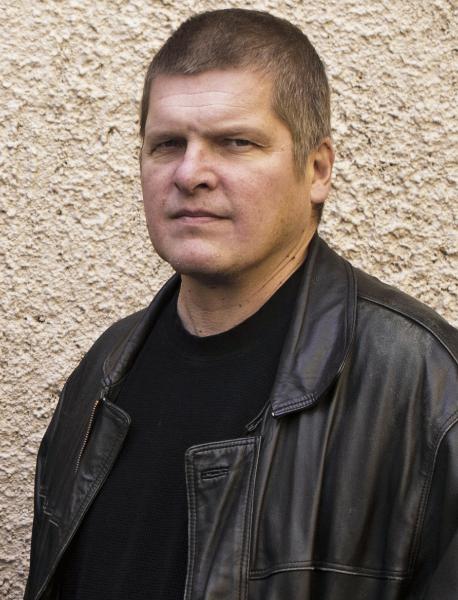 Jarkko Siplia
Jarkko Siplia
Sipila has at least three other titles and in time I will get to them.
Bourne Morris, ‘The Red Queen Run’ (2014)
This krimi is the first of three involving Professor Maureen ‘Red’ Solaris in a college’s school of journalism. The dean of the school has died in a fall down some stairs over the weekend, Did he stumble or was he pushed?

There are many tensions within the school. The Old Guard is mortally jealous of its ancient privileges and prerogatives which the dead dean was eroding in reorganisations. Disappointed and disaffected candidates for tenure seem to be bent on destruction. Meanwhile, among the students, blackmail might be the route to an A+ result. Then there are the sexual assaults, divorces, and alcoholism. All and all, it sounds like a typical department. The only things missing, I thought, were embezzlement and extortion.
In fact, I found it all so real that flipped the pages, it being too much like being back at work: The special pleading from junior faculty, the one-eyed demands from senior professors, the requests of students for yet more concessions. If I wanted that, I could go back to work. It all seemed plausible, but that did not make it any more diverting to read. The only unrealistic element was the consideration and support offered by the corporate management at the top of the college to the beleaguered acting dean.
Professor Solaris is designated acting dean, and becomes involved in the snail-like police investigation. She then confronts the many psychopaths among the faculty and sociopaths among the students. At some point, I said a plague on all their houses.
Flipping the pages was made easier by the rather self-centred telling. The author identifies completely with Red and it shows. Her thoughts are cherished. Her love life sends quivers through the pages. Her fastidious habits are detailed. Oh hum. To this reader all of this was self-indulgent padding that advanced neither character or plot.
 Bourne Morris
Bourne Morris
Not rushing to try volumes two and three, I am afraid.
‘Zombies of the Gene Pool’ (1992) by Sharyn McCrumb.
After reading her ‘Bimbos of the Death Star’ it was only a matter of time until I got around to ‘Zombies of the Gene Pool.’ When my Amazon Wish List came true on Christmas the time was right. It is an amusing and diverting lark as literati Marion and engineer Jay combine forces once again to get to the bottom of a mystery.

When frail Professor Erik Giles asks Assistant Professor Marion Farley to accompany him to a private reunion the fun begins. Jay Mega goes along to ride shotgun.
It is a very special reunion of a select group who were nutcase sci-fi fans in the distant 1950s. In the ensuing forty years some have made it big in books, in movies, in life and others have remained adolescent into old age.
The lore of fandom and tales of conferences past, the parade of sci-fi names, this book has it all.
Then one of the reunionist dies and the plot thickens. The old tensions and rivalries in the merry band emerge perfectly preserved in the amber of time. Secrets, long held and forgotten by some, seep out. Not good. The death was murder. Who done it? That is the question, Mr Spock, and the duo get to work on it tout suite.
With the schizophrenic Mistral leading the pack, along with the semi-comatose Surn, and the one-man avalanche Woodard, the phlegmatic Angela, the absent Earlene, lawyer Jim, the author has assembled a mix of folks and stirred the pot. The plotting is simple but clever, the dialogue sharp, and the setting vivid. Would that I could say even one of those things about most books.
The major theme is the disjunction between the expectation of fans and the reality of writers.
 Sharyn McCrumb, who has many more titles to her credit.
Sharyn McCrumb, who has many more titles to her credit.
There is one glitch: when the hotel manager thinks of the death as murder long before that has been established on page 175. He of all people would certainly has assumed that the old coot died of natural, old-coot causes.
The book has pace, place, and plot. Four stars.
Spoiler Alert! There are no zombies. There were not any bimbos either.
